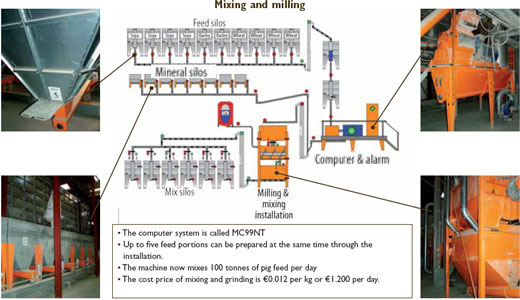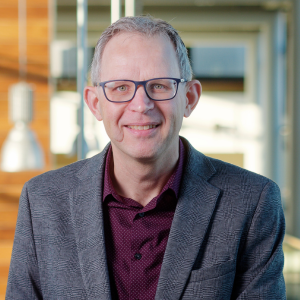One of the best decisions I ever made

What if you have a multi-site pig production operation but your location is nowhere near a larger town? Ordering your feed further away is one option, but mixing and milling on-site is another. One that turns out to have some extra benefits.
In the heart of Jutland, Denmark, one doesn’t always have the feeling of being situated in a densely populated country of Western Europe. The countryside sometimes seems to consist of nothing but slightly undulating landscapes, endless fields, plains and forests with only every now and then a village, a road or a farmhouse. Jutland may be the main chunk of Denmark (69% of its surface) but only accounts for 46% of its 5.5 million inhabitants, since bigger cities like Copenhagen and Odense are located on other islands.
It is of no wonder that the majority of pig operations can be found in Jutland; as is the finishing pig farm of Ny Endrupholm, owned by Martin Madsen, age 38. His multi-site finishing operation is spread out over twelve facilities in the near surroundings, producing altogether 90,000 slaughter pigs per year – equalling to about 25,000 fattening places. The main site of his facility is located near a village called Gørding, roughly 25 km east of Esbjerg.
Large part
Being situated in a somewhat remote part of the country requires quite some logistics to have 25,000 animals fed on a daily basis. By not buying ready feed from a feedmill, Madsen has always bought in feedstuffs, for on-farm mixing and milling. Annually, he needs 5,000 tonnes of soybeans, 12,000 tonnes of wheat and 6,000 tonnes of barley.
Up until two years ago, these amounts were distributed to seven of the twelve production locations in order to create the desired blend prior to being transported onwards to all pig production houses. Apart from requiring mixing and milling manpower on every site, it made comparing performance results difficult. The consequence of decentralised mixing and milling is that pigs in every location receive feed of a slightly different composition.
About two years ago, Madsen decided to try something new in an effort to push his pig production forward. “It was a strategic decision. We wanted to get exactly the same quality of feed in all locations,” he explains. “In addition, we also wanted to simplify the process by creating one place to do all the grinding and blending. This way we can have all the relevant manpower in one place.”
Therefore, on-site in Gørding, Madsen replaced his smaller installations by one large mix and mill installation, housed in a new barn. The machine has a total of ten silos with grain ingredients; four of them contain wheat, four of them soy and two barley. Computer controlled from a special cabin, the machine mixes the available portions of feed into the desired quantities – and adds feed additives from another eight silos containing minerals and premixes.
Out comes a uniform dry feed mixture that meets the needs of all slaughter pigs, produced across five days per week. All in all, the output is stored in six mix feed silos, waiting to be transported by lorries to the several sites.
Ny Endrupholm farm details
|
Distributed
The mix and mill plant was distributed to Ny Endrupholm by Big Dutchman Skandinavia. The principle of on-farm mixing and milling is not new to the company, explains Hugo S. Holm, CEO, as on-farm mixing equipment has been provided by the company since around 1985. It’s the size, however, which has only been present since the last two years. “The installation is mainly usable for larger production sites. In Germany there are some, and also in Denmark. You will find more of them in Eastern Europe, like in Latvia and Russia and that is where we hope to sell more of these.”
The installation is not very difficult to operate, claims Holm, the main ‘rocket science’ is located inside the computing system, not hidden in its use.
Madsen, in the meantime, is a happy man, calling the purchase ‘one of the best decisions he has ever made’ with regard to his pig production business. “This system makes it a lot easier to build new stables,” he says. “We simply don’t need to build new feed installations anymore. This allows us to scale up faster.”
*Vincent ter Beek is editor of Feed Tech’s sister magazine Pig Progress.











